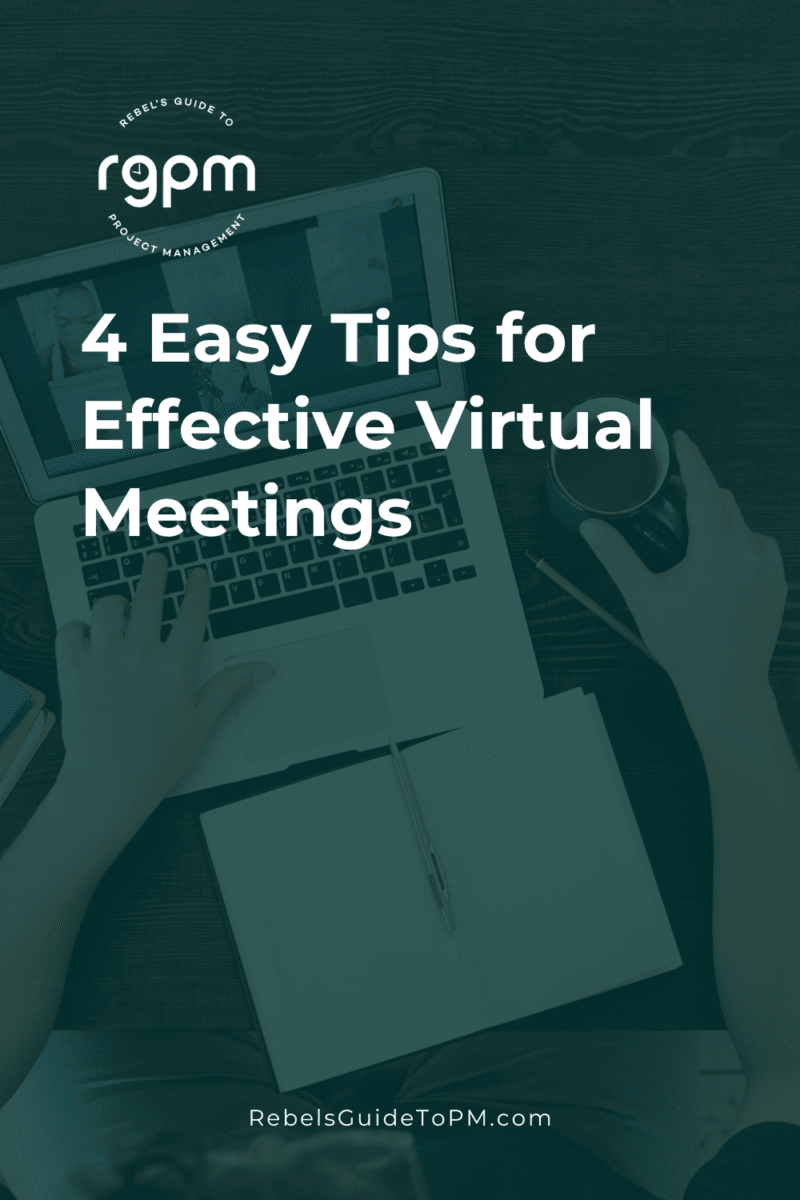4 Easy tips for effective virtual meetings
This blog is reader-supported. When you purchase something through an affiliate link on this site, I may earn some coffee money. Thanks! Learn more.
This is a guest post by Diana Ecker.
Today, we take virtual meetings for granted, but the possibilities they bring free up the world of work. You bring together people who are working from home, on the road for travel, or in offices around the world with just a few clicks.
It makes it possible to work with clients, contractors, and teams from anywhere at all… even though it feels like we spend way too much time in virtual meetings!
Even when you’re hosting virtual team meetings on a daily basis, there’s often still room to optimize. In this article, I’ll share 4 quick and easy tips — each one requires just a minute or two, or even less.
The simple tips below take hardly any time to do, and each one can reduce common sources of aggravation. That helps you lead more effective, efficient virtual meetings.

1. Banish background noise
You want to hear your clients and colleagues (at least most of the time!). But with sensitive microphones, incidental noises — a dog barking in the background, traffic outside, other people talking — can distract everyone on the meeting.
One of the most common offenders seems innocuous at first: typing!
The sound of someone hitting the keys hard can get picked up by a microphone and drive everyone else on the call mad. (I’ve seen it happen more than a few times.)
Fortunately, there’s an easy solution: Most video conferencing software includes an easy way for people to mute themselves or for the host to mute them. Even using headphones is a good way to minimize the tapping.
When you are leading a virtual team, you can proactively address this at the beginning of a meeting, welcoming participants to make use of the mute function and explaining how to use it.
If you are using meeting transcription software, it’s even more important to make sure there isn’t background noise.
Instituting this as a part of your meeting culture can prevent a lot of unnecessary irritation and help participants stay focused on the meeting itself.

2. Prevent an accidental reveal
Lots of project meetings require screensharing of a presentation, document or app so the group can work together. If there’s any chance that you’ll be sharing your screen during the meeting, this tip is for you.
Screen sharing is an invaluable tool for making sure everyone is on the same page — it’s ideal for walking everyone through a spreadsheet or presentation slides.
However, even with excellent screen sharing capabilities, it’s easy to accidentally share the wrong window on your computer. Before you know it, you’re broadcasting a family photo, a confidential document, or a rough draft that isn’t ready to share.
As you’re getting setting up for your next meeting, take just a moment to close out of any windows that you might not wish to accidentally display. Or use one of the default settings in Microsoft Teams which is to share a particular window, not your whole screen.
When you go to share your screen, you won’t have to worry that the wrong thing might come up.
3. See and be seen
The face-to-face aspect of video conferencing is what makes it so immediate and engaging. You can see expressions (and even micro-expressions, if you’re fast enough!).
The flip side of this is that you’re responsible for making sure that your face is clearly visible and well-lit on the screen as well.
If you’re in the shadows — which most commonly happens when you sit with a bright light or window behind you — you can see other people’s expressions, but they can’t see yours.
This issue isn’t trivial. In fact, it can create an ongoing source of tension in a virtual meeting.
If you’re on a laptop, it’s easy to move so you have a wall or other non-lit surface behind you.
If you’re speaking from a desktop computer, see if you can rotate it or reduce the lighting behind you. It’s well worth the effort.
Being able to be seen can improve trust in virtual teams.
(Get more expert tips on lighting and the visual aspect of web conferencing: Tips for Better Video Conferencing.)

4. Don’t let participants languish
If you’re the meeting host and you’re having a busy day, it’s easy to run late… and forget about the participants on the call. When you pop on 5, 10, or 15 minutes late, it’s common to say, “Sorry, folks — let’s get started!”
However, everyone who has been waiting and watching a spinning wheel, a loading icon, or whatever your video conferencing software displays is now feeling frustrated.
Unless you’ve got an unusually happy-go-lucky group on the call, you now have to take on that frustration in addition to the original goals of the meeting.
Take a minute to be mindful of your participants’ emotional experience (and its potential impact on your meeting objectives).
The experience of participants on a virtual meeting can have a significant impact on the effectiveness of the meeting itself.
If you’re running late, that means sending a quick message before the meeting starts to let them know — and that you’ll ping them with a quick instant message or text message once you’ve launched the meeting.
Small tips, big payoff
Taking just a bit of time to manage that experience — from reducing background noise to making sure that no one sits and waits (and waits, and waits) — can pay off for you and for everyone in the meeting.
Further reading
These books are recommended reading on managing in virtual teams
About the author: Diana Ecker is the Content Marketing Manager for Redbooth, which has offices in Silicon Valley and Barcelona as well as contractors around the world, so she’s no stranger to virtual meetings!
Pin for later reading

